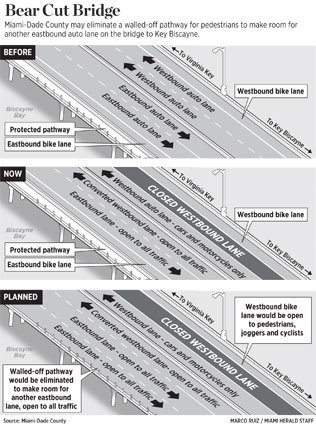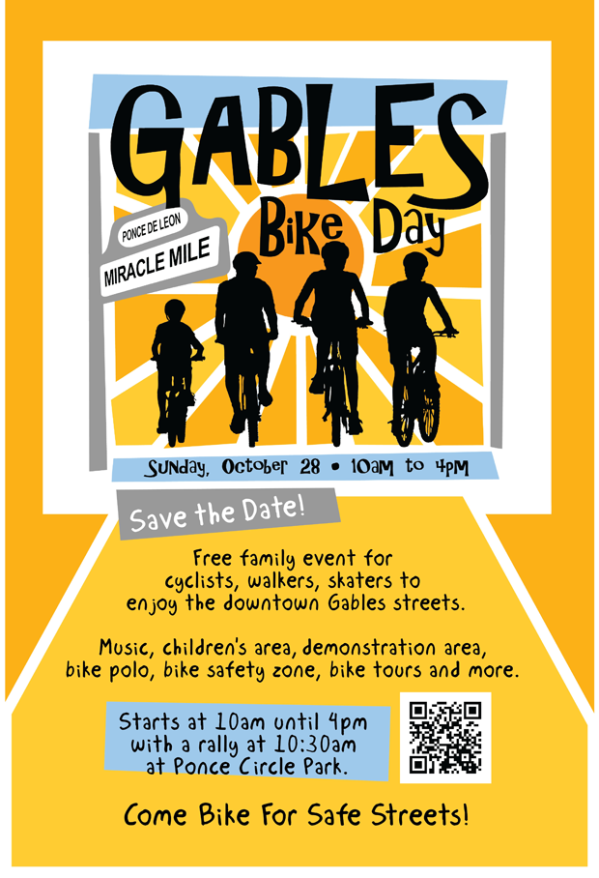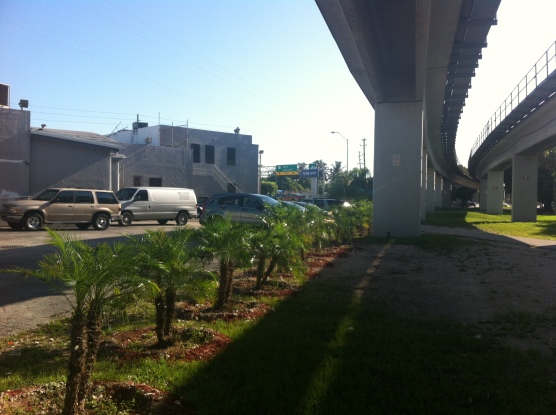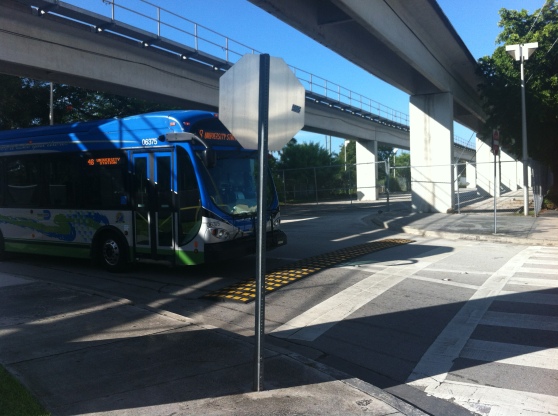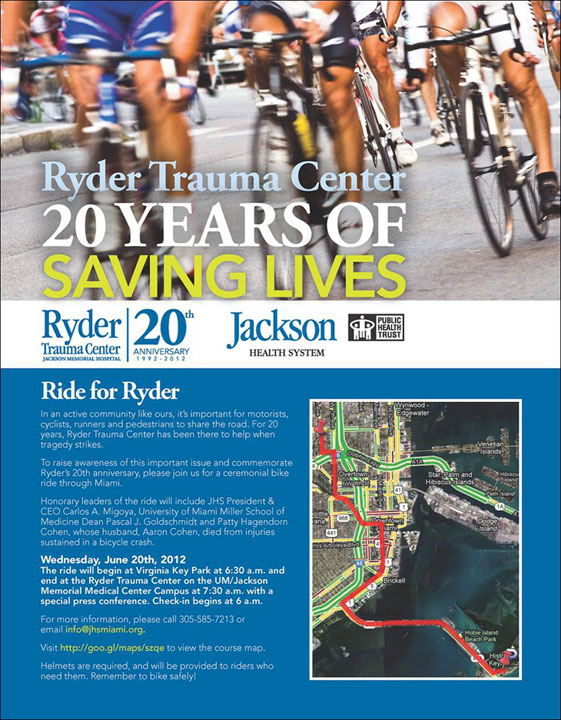When we go to BPAC meetings, we oftentimes leave with a feeling that county and city projects in Miami-Dade County take too long to come to fruition. But at least most of the time there at least appears to be some sense that the people working on the city and county level are genuinely trying.
Most of the time when FDOT appears you scratch your head and leave with a feeling that the agency and its representatives simply don’t understand – or worse, don’t want to understand (and from this criticism we specifically exclude their regular contractor-representative Stewart Robinson), despite having had some assurances from FDOT employees that they actually care about bikes. The September BPAC meeting was no exception.
That’s not quite true. FDOT brought an actual member of the agency to the meeting (though we have yet to see the bicycle / pedestrian coordinator for District 6 at a BPAC meeting), together with a contractor who was the main spokesperson. After initially presenting a project on SW 1st Street between 27 Ave and 2nd Ave as well as portions of Flagler Street with bike facilities over the course of the planning stages, the current plans have now removed dedicated bike lanes on large portions because it would take parking away and it may slow down traffic.
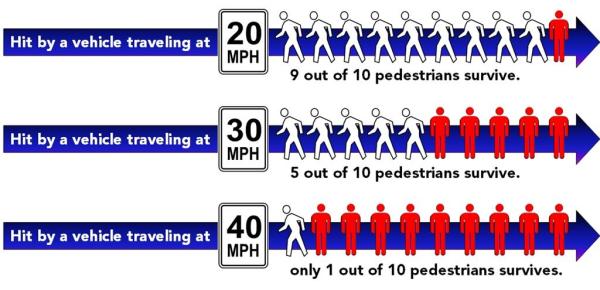
You could be forgiven to think “here come the old arguments again”. Given that there has now – for a long time – been evidence that higher speeds kill more pedestrians and cyclists when hit (for those really eager, take a look here a review of the data by the U. S. Department of Transportation), one would have thought that FDOT would have taken note. The push back from the committee members was virtually unanimous. All those who spoke expressed their concern that the agency did not live up to its mandate. For some reason, FDOT appears to think that providing parking is part of their mandate. We have yet to find that in any pertinent legislation or regulation and are happy to stand corrected (yes, this is an explicit call for FDOT to provide documents to that effect) should the reverse be true.
When confronted with the fact that the Miami Parking Authority had determined that parking spaces on one side of SW 1st Street could be removed without a discernible decrease in the level of parking provided (parking is underutilized and parking spaces exist on both sides of SW 1st Street), the argument was brought forth that FDOT had no mandate to take something away that already existed. This is exemplary of FDOT’s mindset: don’t inconvenience anyone that drives a car – which almost by default decreases the safety for cyclists.
What FDOT’s mandate actually entails is to provide safe streets. For those within FDOT that need a reminder, please take a look at your own website which has this nice-looking document:
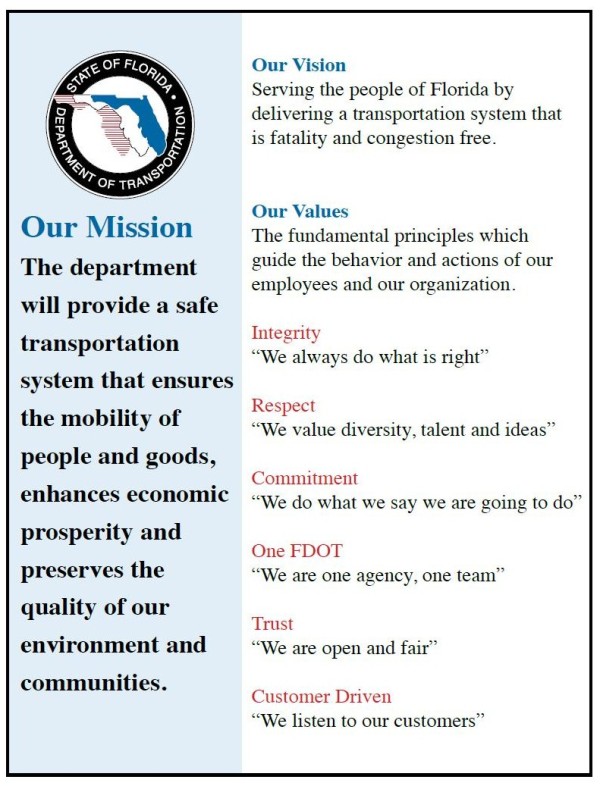
There is also a requirement to build complete streets, to the extent possible. For anyone wanting to take a closer look at the legislative mandate that FDOT has, you can find it here. In a nutshell, there are three reasons that FDOT can bring forward for not including bicycle and pedestrian facilities in their projects (note also that “special emphasis shall be given to projects in or within 1 mile of an urban area”, which SW 1st Street undoubtedly falls under). These are limited to
– where the establishment of bicycle and pedestrian ways would be contrary to public safety;
– when the cost would be excessively disproportionate to the need or probable use;
– and where other available means or factors indicate an absence of need.
None of this applies in the context of SW 1st Street. Public safety actually demands the inclusion of such facilities, the costs are negligible for FDOT since they do not have to purchase land to put these facilities in place and there is certainly a need for such facilities. Note also that the toolbox that FDOT can rely on for such facilities does NOT include sharrows. One wonders why the FDOT representatives made arguments that do not rely on its actual mandate, but bring forth other reasons which happen to be more convenient for one mode of transportation (cars), but increase the risk for all others (bikes, pedestrians, public transit).
The question ultimately comes down to this: is FDOT willing to actually follow the legislative mandate or is it trying to make arguments that have nothing at all to do with that mandate? Is FDOT finally willing to give priority to safety over car parking? This means – and this appears to be the biggest challenge to the thinking in FDOT District 6 – that the prioritization that is currently in place is wrong. What became apparent is that car parking is more important to FDOT engineers and project managers than the lives and the well-being of people. Given FDOT’s dismal track record in District 6, we should not be surprised.
We simply expect more from FDOT. We expect FDOT representatives to be familiar with studies (see here, here and here) that show that bicycling facilities actually increase business and increase property values. We expect that (in line with comments by BPAC member Matthew Toro) that planners think in a forward-looking fashion rather than applying the same old methods that have moved this state to the sad state it is in – home to the four most dangerous metro areas in the country for pedestrians (and it is no stretch to think that the same is true for cyclists). This would include providing studies that take account of an increasing number of people who – voluntarily or involuntarily – will not drive in the future (as opposed to presenting a large increase). It would also involve taking these studies seriously in the projections of users that FDOT provides. That would then open the toolbox for FDOT to think more creatively about a five lane street – three of which are reserved for moving traffic and two of which are used for parking – by thinking about and enabling systems like Bus Rapid Transit (BRT) or at least dedicated bus lanes / shared bus and bike lanes (see here and here) so as to advantage public transit over individualized motor traffic. None of this is possible in the minds of people whose only idea – we are not talking about prioritization – appears to be moving cars.
So, here we go again. FDOT must be more serious about having a conversation about creating a safe environment for all road users. In our last blog entry about FDOT, we said that we
want to believe that FDOT wants to have a conversation. It may be a long time until we see real progress. In the meantime there is hope.
We still have hope. Please send Gus Pego, the head of FDOT District 6, an email (if you have trouble with the link, his email address is gus.pego@dot.state.fl.us) stating that the proposed design for this project and others is inadequate and that FDOT – yet again – does not fulfill its required mandate to provide safe streets for all users.

